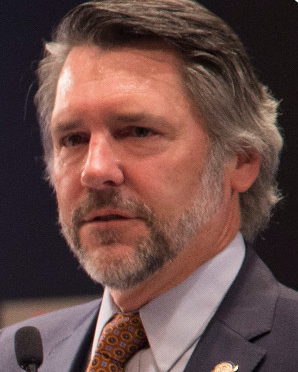Instructor: Paul Sledzik
 |
Biography: Paul Sledzik served for 35 years in federal government. For the past 17 years he held positions of increasing responsibility at the National Transportation Safety Board. Before retiring in 2021 he served as the Principal Deputy Managing Director (2018-2021), and prior to that as Director of the Office of Safety Recommendations and Communications (2016-2018) which managed external communications to a range of stakeholders regarding NTSB investigations, activities, and safety recommendations. His office directed the media communications, government affairs, safety advocacy, and family assistance activities of several major accidents, including the sinking of the cargo ship El Faro in the Caribbean, an engine failure while airborne involving a Southwest Airlines flight, an attempted wrong runway landing in San Francisco, a New Jersey Transit commuter train derailment, school bus accidents in Baltimore and Chattanooga, and a gas explosion at an apartment complex in Silver Spring, Maryland. He also led the public communications efforts related to high profile agency studies on motorcycle safety, pedestrian safety, and speeding, which combined resulted in the issuance of 90 recommendations to federal agencies, safety organizations, and states. From 2010 to 2016, Paul led the NTSB Transportation Disaster Assistance Division which coordinates family assistance in all modes of transportation in conjunction with local, state, federal and non-governmental agencies, and transportation operators. From 2012 to 2016, he represented the U.S. in a multiyear effort by the International Civil Aviation Organization (ICAO, a United Nations body comprised of 193 countries) to develop policies to ensure that the well-being of aviation accident victims and families are fully addressed by ICAO signatory states. Prior to joining the NTSB, he worked as a forensic anthropologist and museum curator at the National Museum of Health and Medicine in Washington, DC from 1990 to 2004. During the latter part of working at the museum, he also served for six years as the team leader for the Region 3 Disaster Mortuary Operational Response Team, a division of the US Department of Health and Human Services, where he managed a team of 100 forensic scientists and mortuary specialists in mass fatality response. In the response to the events of September 11, 2001, he led the DMORT team in the identification of the victims from the crash of United flight 93 in Shanksville, Pennsylvania. Trained as a forensic anthropologist, Paul has served as a consultant and advisor to several federal, international and non-governmental agencies on issues of human identification and disaster response. He has written extensively on the topic of mass fatality management for professional journals and textbooks. He participated in the victim identification and recovery efforts in over 30 mass fatality events and transportation accidents. Paul earned a BA in anthropology from the University of Rhode Island in 1984 and an MS in biological anthropology from the University of Connecticut in 1988. In 2021, he was awarded the Distinguished Presidential Rank Award for federal senior executives. |
Courses by this instructor
Transportation Disaster Response & Family Assistance Operations
 Being prepared to assist those impacted by a transport disaster, and understanding the roles of response partners are key components to effectively managing risk and ensuring business continuity.
October 6-8, 2026, Boeing Center for Aviation & Aerospace Safety (Daytona Beach Campus, FL)
Being prepared to assist those impacted by a transport disaster, and understanding the roles of response partners are key components to effectively managing risk and ensuring business continuity.
October 6-8, 2026, Boeing Center for Aviation & Aerospace Safety (Daytona Beach Campus, FL)

 Cart (0)
Cart (0)